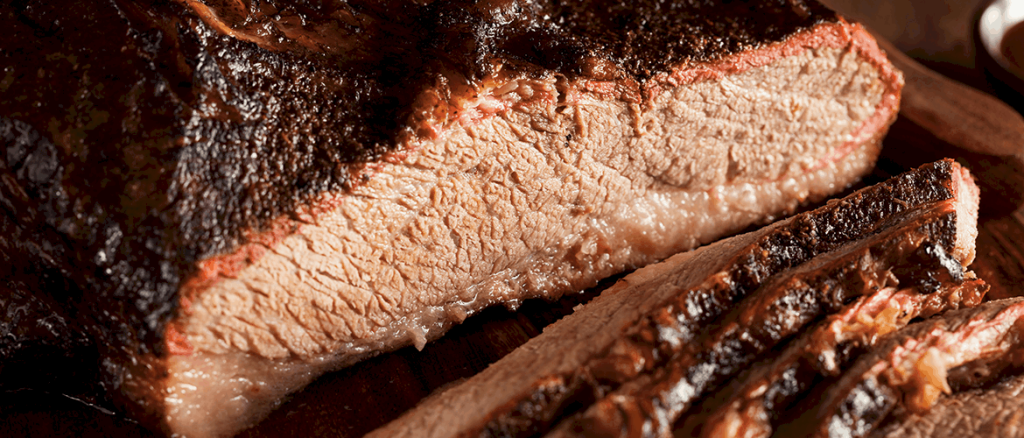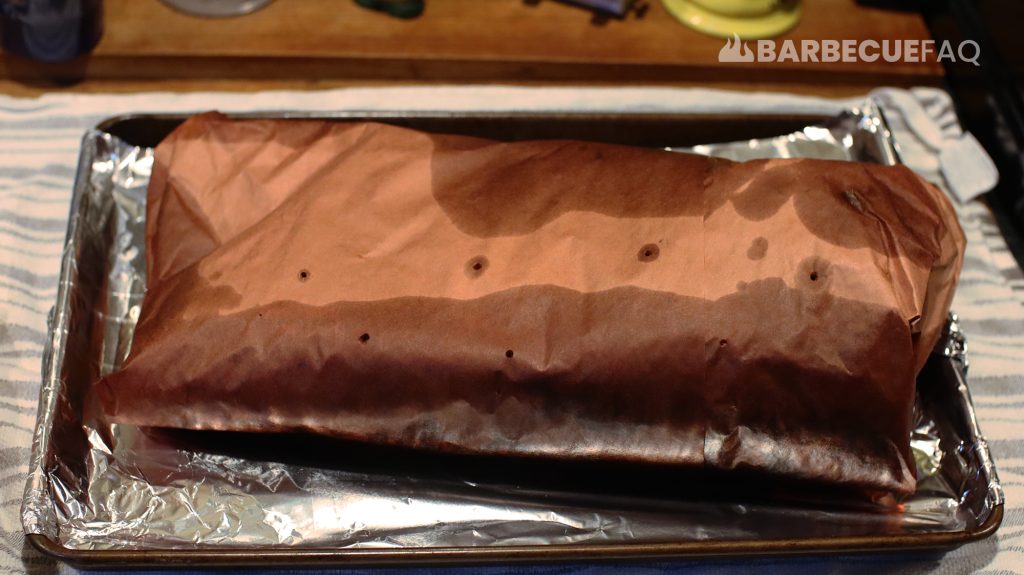If you’re taking the brisket to “probe tenderness,” you’re likely overcooking the meat.
Even though it passes all the “tests”:
- After slicing it bends but doesn’t tear
- Easily pulls apart
- 203F+ internal
- Probe tenderness

Rather than Smoking to Complete Tenderness, Smoke Until Near Tenderness
When the thickest part of the flat reaches 190F, drop the temperature of your smoker to ~175F and then “hot hold” overnight for 12+ hours.
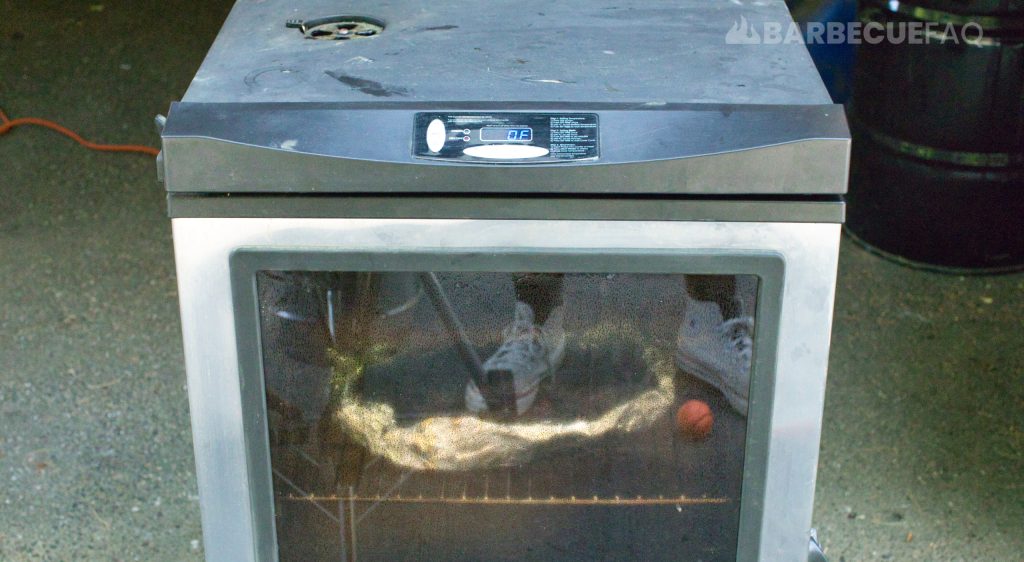
I personally use my electric smoker set to 175F*,This keeps me over 140F for food safety.
*This number is calibrated for MY smoker.
You could opt to use your kitchen oven set to the lowest temperature setting. If you can only go as low as 200F, crack the door with a wooden spoon.
All we’re doing when we’re cooking brisket is rendering collagen (connective tissues) into a gelatin.
To do this we need:
- Time,
- Temperature
Collagen is broken down faster after 160F and since we’re at 190F, we’re staying within this temperature range (160-190F+ due to carry over) for 12+ hours.
Meaning, we’re going to keep rendering collagen and tenderizing the meat, no matter what.
Going to 203F+ only pushes out more moisture and dries out the meat – you also risk overcooking it and making the meat taste like pot roast.
This is why I always smoke my brisket a day in advance.
If You’re Foil Boating, You Need to Wait Longer to Boat
The sole purpose of the boat is to expose the fat cap throughout the entire cook.
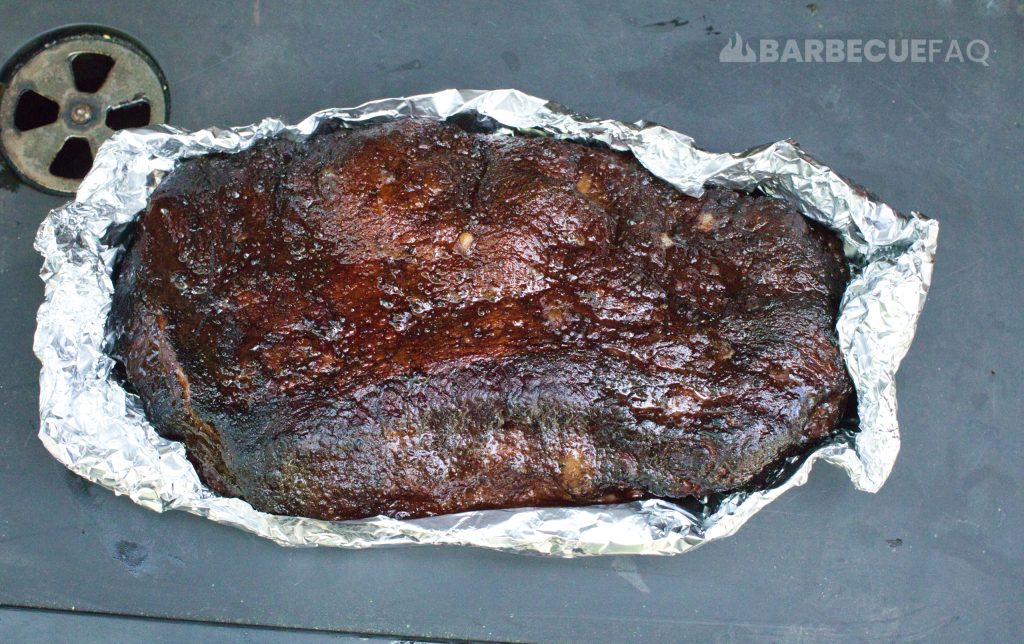
If you boat during the stall @ 150-165F, the meat is still pushing out TONS of moisture and that moisture will collect in the foil boat.
It’s a mixture of:
- Fat &
- Water
This liquid is going to braise/confit the meat in tons of liquid which leads to more of a “pot roast” flavor than a true “brisket” flavor.
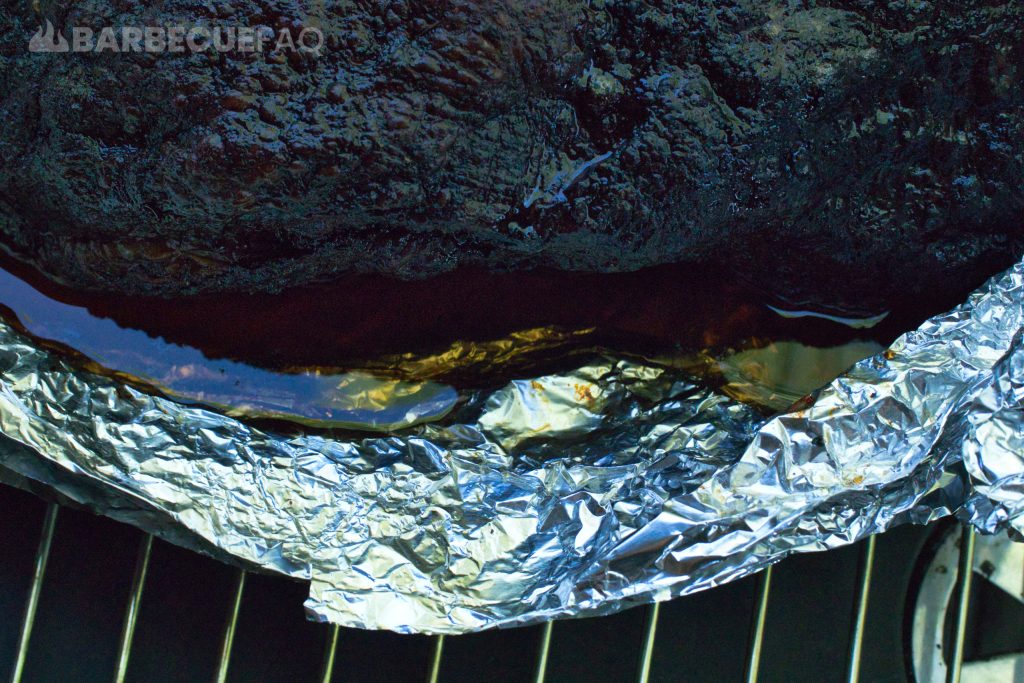
Instead, if you wait till around 170-180F – when you’re out of the stall – and then boat, you’ll collect far less liquid than if you had boated at 150-165F.
You’ll also have the benefit of building a better bark because it’s drier.
Most bark forms AFTER the stall.
That Also Means If You’re Adding Liquids, Don’t
That goes for stuff like Beef broth, stock, water infused with bullion, beer, etc.
Don’t add any if you’re boating the meat.
The reason people use liquids is because it helps with heat transfer – it will cook the meat faster because liquids have a better heat carrying capacity than air.
But this is what you do when you make Pot Roast, not Low and Slow brisket.


